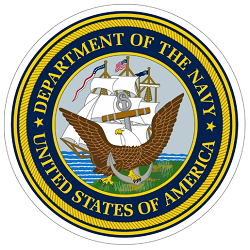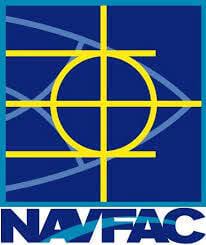 |
PUBLIC MEETING AND PROPOSED PLAN FOR
AMPHIBIOUS EXCAVATION OF SOIL AND SEDIMENT AT
INSTALLATION RESTORATION PROGRAM SITE 74
NAVAL WEAPONS STATION SEAL BEACH
SEAL BEACH, CALIFORNIA
August 2024
|
 |
The Department of the Navy (DON) invites you to provide comments and attend a public meeting presenting the Proposed Plan to conduct amphibious excavation of contaminated soil and sediment identified at Installation Restoration Program (IRP) Site 74 (also known as the Old Skeet Range) located at Naval Weapons Station (NAVWPNSTA) Seal Beach in Seal Beach, California. The Proposed Plan and public meeting are part of the DON’s IRP, which was established to clean up residual hazardous substances present in the environment from former activities at military installations. The IRP adheres to requirements set forth under the Comprehensive Environmental Response, Compensation, and Liability Act (CERCLA; commonly known as Superfund).
IRP Site 74 is approximately 23 acres within the south-central portion of the base. The western portion of the site is within the Seal Beach National Wildlife Refuge (NWR). IRP Site 74 was once an active skeet and trap range constructed in the late 1960s. Skeet Range members typically used 12-gauge shotguns to shoot clay targets. Lead, antimony, and polycyclic aromatic hydrocarbons (PAHs) are the site contaminants of concern (COCs). Shot is the primary source of lead and antimony contamination of the site, and PAHs are associated with the clay target fragments that were distributed within the soil footprint area at IRP Site 74. Because of concerns that waterfowl and other wildlife foraging at IRP Site 74 could ingest the shot and soil with residual lead and antimony from the spent shot, the range was closed down in the early 1990s. Stray bullets from a Small-Arms Range located north of IRP Site 74 represented another potential source for the lead contamination; this range was placed on inactive status in 2021 and is expected to remain inactive indefinitely. Potentially impacted media at IRP Site 74 to be excavated under Alternative 4 includes 9.63 acres of soil in the upland area and 2 acres of sediment in the wetland area. Sediment in the wetland area would be removed using amphibious excavation equipment in order to have less impact on the wetland than using conventional excavation equipment.
Various environmental assessments have been performed since 2000 to evaluate potential threats to human health and the environment and assess remedial alternatives for the site. In 2022, a Feasibility Study was conducted to evaluate four remedial alternatives for the site. Based on the results of the detailed evaluation of alternatives, the Navy recommends Alternative 4 – Amphibious Excavation to excavate impacted soil and sediment from IRP Site 74 and reduce risk to ecological receptors and hypothetical future human receptors, while limiting habitat disturbance. Excavated soil and sediment will be tested and disposed offsite at locations to be determined depending on the test results. Alternative 4 meets the threshold criteria of effectively protecting human health and the environment, complying with applicable or relevant and appropriate requirements and satisfies the remedial action objectives for IRP Site 74.
The public is encouraged to review and comment on the alternatives presented in the Proposed Plan. A link to download a PDF of the Proposed Plan documenting the Navy’s approach to excavate soil and sediment can be found at the link below:
Site 74 Proposed Plan
The Navy will accept public comments during the 30-day comment period held from Thursday August 1, 2024 through Saturday August 31, 2024. Written comments should be postmarked no later than Saturday August 31, 2024 and mailed to:
Ms. Kathryn Robinson
Naval Facilities Engineering Systems Command (NAVFAC) Southwest,
750 Pacific Highway, 11th Floor,
San Diego, California 92132.
Emailed comments may be submitted to navfac_sw_nws_seal_beach_rpm@us.navy.mil by Saturday August 31, 2024.
PUBLIC MEETING TO BE HELD ON Thursday, August 15, 2024 from 6:00 p.m. to 8:00 p.m.
A public meeting to present the Proposed Plan will be held at:
Seal Beach Mary Wilson Public Library
707 Electric Avenue
Seal Beach, CA 90740
|
This website provides background information on the U.S. Department of the Navy’s (Navy) Environmental Restoration Program (ERP) sites at Naval Weapons Station (NWS) Seal Beach. The overarching goal of the Navy’s ERP is to protect human health and the environment from past hazardous waste practices and releases at Navy Installation Restoration Program (IRP), Munitions Response Program (MRP), and Underground Storage Tank (UST) program sites. The Naval Facilities Engineering Systems Command Southwest in San Diego, California, manages the Navy’s ERP at NWS Seal Beach.
The Navy’s ERP at NWS Seal Beach currently includes 69 IRP sites, most of which have been either cleaned up or determined to contain no significant contamination.
The IRP at Naval Weapons Station Seal Beach began in 1985 with an initial assessment study that identified 34 locations with potential contamination. A Resource Conservation and Recovery Act (to facility assessment in 1989 and subsequent discoveries brought this total up to 76 locations, although five currently operating, permitted facilities were removed from the program and two additional sites were transferred to in the Navy’s UST program. During these and later studies, 49 sites were determined to contain no significant contamination. Cleanup actions are complete at 15 sites. The remaining five IRP sites are in various stages of active study or cleanup.
The Navy identified five munitions response sites during a 2008 MRP preliminary assessment and site inspection. The MRP is implemented in conjunction with the IRP, as required by the Comprehensive Environmental Response, Compensation and Liability Act (CERCLA) process. Three MRP sites are currently in the remedial investigation phase of the CERCLA process to evaluate the potential threat to human health and the environment that may have resulted from munitions constituents releases. Two of the five sites were closed with no further action required following the completion of site inspections that found no munitions constituents.
Naval Weapons Station Seal Beach History
NWS Seal Beach was developed on approximately 5,000 acres of land granted by deed to the Navy in 1944. The naval weapons station is approximately 25 miles south of downtown Los Angeles, California, within the City of Seal Beach in Orange County. Nearby urban areas include Long Beach to the west, Los Alamitos to the north, Westminster to the east, and Huntington Beach to the southeast. Anaheim Bay and the Pacific Ocean are adjacent to the southwest. The Seal Beach National Wildlife Refuge (NWR) lies within NWS Seal Beach.
Since 1944, the naval weapons station’s mission has been to provide shore-based infrastructure support to the Navy’s ordnance mission and other fleet support activities. The station is one of several weapons stations maintained by the Navy that provides fleet combatants with ready-for-use ordnance. It includes a headquarters building within an administrative area as well as waterfront, storage, testing, and production facilities that support the fleet.
NWS Seal Beach was originally commissioned as a Naval Ammunition and Net Depot (NAND) responsible for issuing ammunition; replacing ammunition and ammunition components; and receiving, segregating, and shipping light ammunition and explosives cargo. Ordnance production and handling facilities constructed and used during World War II and the post- World War II era included additional ammunition storage facilities, a static rocket test firing facility, and a fuse and detonator magazine. Ammunition handling operations following World War II included demilitarization of large quantities of ammunition in stock as well as ammunition shipped to the depot during the rapid demobilization following the war.
The handling of ammunition at NAND Seal Beach accelerated steadily from the beginning of the Korean War in 1950 through its end in 1953. Operations shifted between 1958 and 1962 from conventional ammunition to guided missiles and related components including surface-launched missiles and underwater weapons. This shift in emphasis led to the redesignation in 1962 of NAND Seal Beach to NWS Seal Beach. An increase in the production of surface missile systems during 1966 led to the renovation of conventional ammunition facilities. By 1970, ordnance production numbers decreased, and two reductions-in-force had occurred.
In 1972, the Seal Beach NWR was established on NWS Seal Beach land. The refuge comprises 965 acres and includes a portion of Anaheim Bay and its adjoining salt marsh. The principal focus of the NWR is the protection of federally listed species and coastal wetlands used for foraging and resting by migratory waterfowl, shorebirds, and raptors that travel along the Pacific Flyway.
NWS Seal Beach currently serves as a supply point for more than one-half of the operating Navy and Marine Corps forces in the Pacific. The Navy uses the station to receive, store, and guard explosives and ammunition and to distribute and deliver them to other installations. Missiles, torpedoes, countermeasure devices, and conventional ammunition are loaded onto ships at the facility’s 950-foot-long wharf. An average of 40 vessels are loaded or unloaded with munitions each year. In addition, personnel perform maintenance on specific weapons systems.
Environmental Restoration Program Background
Congress passed RCRA in 1976, the first of the major statutes enacted that addresses environmental issues at Navy installations. The act was designed to manage disposal of wastes which were being generated and addresses corrective actions for leaking USTs that used to contain fuels and other petroleum products. The management of hazardous substances at operating facilities, often designated as solid waste management units in RCRA operating permits, is also regulated under RCRA and is evaluated through RCRA facility assessments.
CERCLA, also known as Superfund, was established in 1980 to provide a mechanism for the United States Environmental Protection Agency to clean up sites contaminated with hazardous waste and prevent contamination of future sites by assigning liability to responsible parties. The NWS Seal Beach IRP sites identified for the Navy’s ERP were or are currently addressed under CERCLA.
In 1986, the Superfund Amendments and Reauthorization Act (SARA) amended the CERCLA legislation. Among other changes, SARA established the Defense Environmental Restoration Program (DERP) which is managed by the Office of the Deputy Under-Secretary of Defense, Installations and Environment. The DERP cleans up hazardous substances, pollutants, contaminants, and military munitions remaining from past activities at military installations and formerly used defense sites.
The Navy, the current landowner of NWS Seal Beach, entered into a Federal Facility Site Remediation Agreement with the State of California in September 1991. As the lead federal agency, the Navy works in partnership with the California Department of Toxic Substances Control and Santa Ana Regional Water Quality Control Board in accordance with the CERCLA process to collect and evaluate environmental data addressing issues related to past releases at each IRP and MRP site.
CLICK HERE for information on the Navy’s ERP.